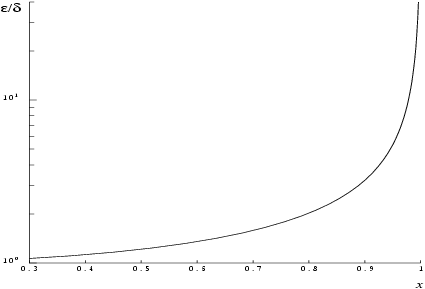S11AAF calculates an approximate value for the inverse hyperbolic tangent of its argument, .
For
it is based on the Chebyshev expansion
where
,
,
.
If on entry
or
, explanatory error messages are output on the current error message unit (as defined by
X04AAF).
If
and
are the relative errors in the argument and result, respectively, then in principle
That is, the relative error in the argument,
, is amplified by at least a factor
in the result. The equality should hold if
is greater than the
machine precision (
due to data errors etc.) but if
is simply due to round-off in the machine representation then it is possible that an extra figure may be lost in internal calculation round-off.
Figure 1
The factor is not significantly greater than one except for arguments close to
. However in the region where
is close to one,
, the above analysis is inapplicable since
is bounded by definition,
. In this region where arctanh is tending to infinity we have
which implies an obvious, unavoidable serious loss of accuracy near
, e.g., if
and
agree to
significant figures, the result for
would be correct to at most about one figure.
None.
